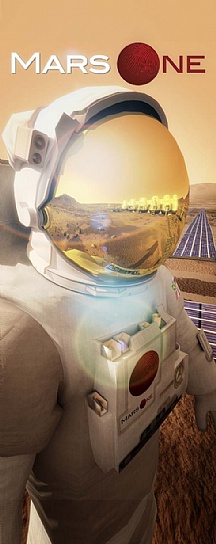Mars One Set To Debate MIT At Mars Society Convention

Is Mars One even feasible? You may remember that MIT study that basically said it’s not. While MIT students are brilliant, obviously there are people who disagree and the unfortunate part is that they had only limited information to work with. In the hope of addressing this question, a team from Mars One headed by founder and CEO Bas Lansdorp will be debating the MIT team that created the study at this year’s Mars Society convention.
On an interesting note, Mars One has released the long-anticipated Paragon study ahead of the debate. This is a chance for people to see technical details related to the Environmental Control and Life Support System (ECLSS), as well as the Surface Suit System that will be used during EVAs, that will be a major part of the issue of whether people can survive on Mars for longer than a couple of months.
This is what Mars One candidate Ryan MacDonald says about it.
Mars One would do well to have one or two people involved in creating the Paragon study on its debate team. Some of the issues brought up in the MIT that should be addressed include:
- Overproduction of oxygen by the crop plants in the Mars One greenhouse modules. MIT says that this could trigger a chain of events that would essentially suffocate the crew if not handled wisely. A spinoff of the “Aquaman crystal” that can absorb oxygen to be used later (like, in an EVA suit) may be part of the solution.
- Readiness of ISRU technology not being where it needs to be. To be fair, most ISRU technology has not actually been tested on Mars yet. That’s part of the point of sending most of the hardware in advance – to make sure everything works before actual people are sent.
- Resupply logistics. In essence, if we have a nasty fire that destroys pretty much our entire food supply, how are we going to replace it before we starve? While it might seem obvious to just not store the emergency food rations and the backup seed supply in the greenhouse, this should illustrate the problems involved in getting supplies from Earth. It’s expensive, takes time (expect a shipping time measured in months even in the best case scenario), and should not be counted on when supplies get low. It’s a case for having as many backups on hand as reasonably possible, recycling everything and using ISRU as much as possible – and, if you’re wondering, ISRU stands for “in-situ resource utilization,” essentially using resources extracted from the local environment.
- Funding. “No bucks, no Buck Rogers” is one saying that most serious space fans are familiar with. While this isn’t Mars One’s fault, history seems to have proven that when you consider that NASA’s post-Apollo plans got whittled down to just the space shuttle. According the the MIT study, the Mars One plan will require 15 Falcon Heavy launches just to establish the first crew and that means money. According to Mars One, it’s going to cost $6 billion to send the first crew and I’ll be impressed if they can get that from the investors that Bas Lansdorp says he’s in talks with. No worries if investors are unwilling to put up the full $6 billion though. People tend to underestimate the sheer amount of money that companies spend on marketing and I honestly think Mars One could snag a cut of that once the cameras start rolling.
I’m actually hoping for a lively debate at the Mars Society convention. Releasing the Paragon study ahead of time was a smart move so that anyone who cares about keeping things in their appropriate context can look it over. If you’d like to attend, the Mars Society convention will be held at the Catholic University of American on August 13-16.
[simple-rss feed=”http://rest.ebay.com/epn/v1/find/item.rss?keyword=%28Planet+Mars%2CElon+Musk%2CRichard+Branson%2CSpaceX%2CLego+spacecraft%29+-%28M%26Ms%2CVeronica+Mars%2CBruno+Mars%29&sortOrder=BestMatch&programid=1&campaignid=5337337555&toolid=10039&listingType1=All&lgeo=1&feedType=rss” limit=10]








